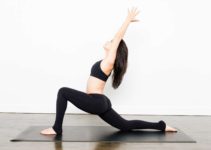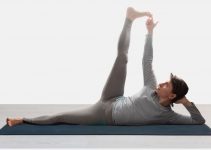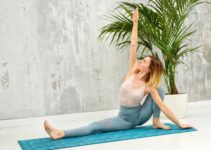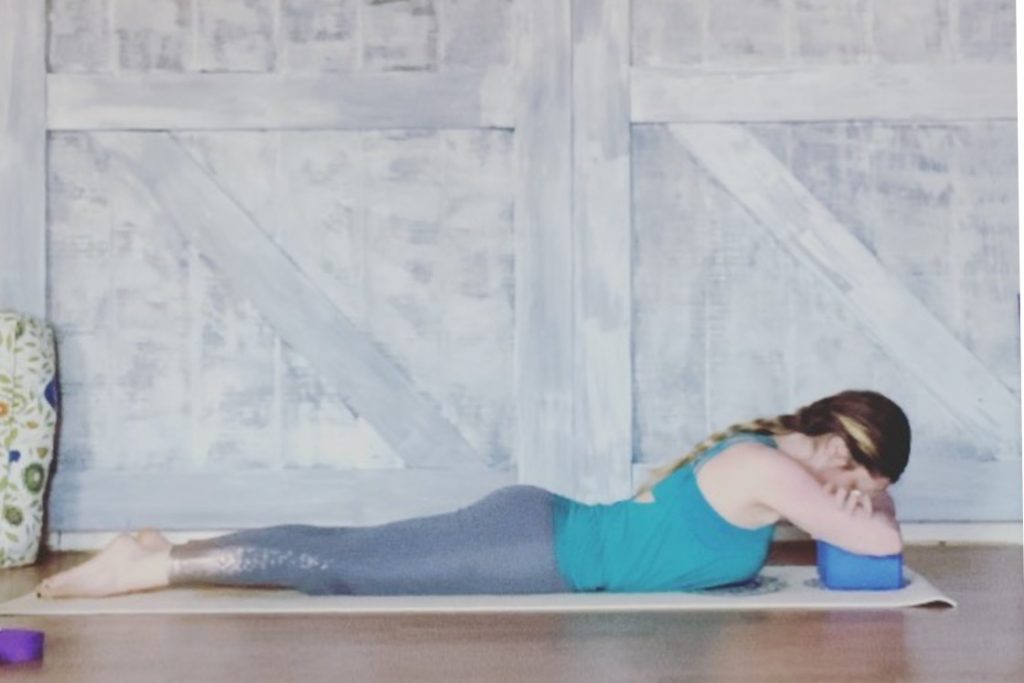
Makarasana is deep relaxation restorative pose. It is one of the best poses for setting a state of tranquility in the mind that generally performed at the end of a rigorous yoga session.
The relaxation mechanism of Makarasana makes it different from widely used relaxation pose Savasana.
- In savasana, the upright position of head and neck may lead to a state of sleep.
- In contrast to this, In Makarasana, there is gentle pressure remains around the neck region. Hence, practitioners remain conscious throughout the practice.
The primary aim of Makarasana is to relieve any strain that may come during the physical asana practice.
Meaning
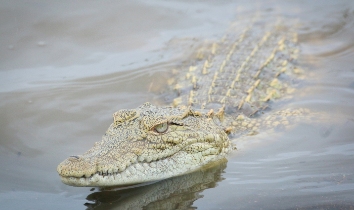
In Makarasana our body lies in opposite to Savasana i.e. face down with the hands folded under the head. This elevated face and neck resemble a crocodile resting on the surface of the water.
Makara is a Sanskrit term that means ‘Crocodile’ and ‘Asana‘ means ‘Pose’. Makarasana is the pose of ‘Crocodile’ also called ‘Silent hunters’. The way the crocodile remains calm on the surface of the water as well as scanning all the activities around it, practicing Makarasana does the same. It makes the person calm and silent to observe things with greater attention.
Gheranda Samhita, a 17th-century text mentioned Makarasana to increase the bodily:
Lie on the ground, face downward, the chest touching the earth, the two legs being stretched: Catch the head with two arms. This is called Makarasana, the increaser of bodily heat.
Gheranda Samhita Chapter 2 Verse 40
Makarasana Practice Guide
By following points below, one can practice Makarasana easy and safe.
Precautions & Contraindications
- A practitioner with a recent serious back injury such as Spondylolisthesis (slipped vertebrae at the base of the spine), cauda equina syndrome (nerve compression due to injury in the lower back), sprains and strains, should consult a doctor before coming into this pose.
- It should be kept in mind that eating should be done 4 to 5 hours prior to the Makarasana practice otherwise it could cause serious digestive issues.
- Pregnant women should avoid practicing this asana due to the prone position of the asana it would lay pressure on the abdomen and could prove to be fatal for the fetus.
- People with the following serious neck condition refrain from doing this asana. For example Cervical spondylitis, Nerve pinch, and Discs problem.
Preparatory Poses
- Cat Pose (Marjari asana)
- Cobra Pose (Bhujangasana)
- Bridge Pose (Sethu Bandhasana)
Makarasana Steps
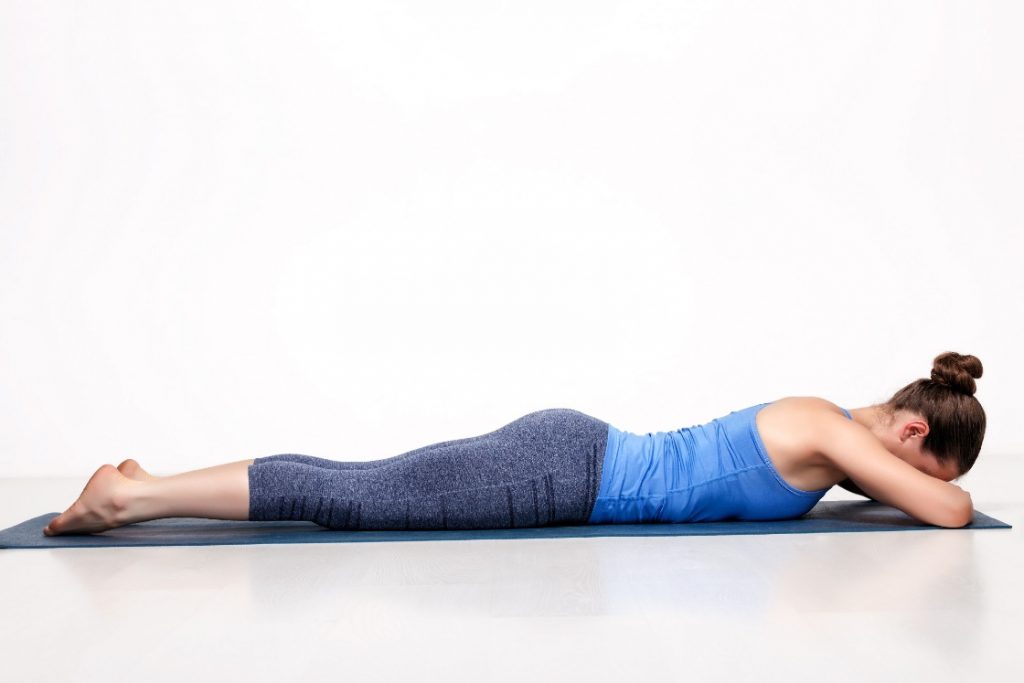
- Begin by lying prone on the mat. Relax your body and gather awareness to lead your body in the asana.
- Extend legs apart from each other and toes pointing outward. Now, Fold your hands and place your elbows to the ground and fingers facing forward.
- Further, try to raise your neck and shoulder after establishing a gap between the elbows. Now, firmly place your palms beneath your chin.
- Try to get comfortable in the posture by spreading the leg a bit more in the outward direction. Feel the touch of the ground here and maintain the posture.
- Remain in the posture as per your comfort level. After reaching into the deep relaxation gradually comes out of the posture by swiftly removing the hands, head down, and relax in savasana for a few minutes.
Time & Duration
The Makarasana enriched a practitioner with peace and relaxation so, performing it in between the two yoga asanas for 3 to 5 minutes is very refreshing.
If it is to be performed at the end of the yoga session then a minimum of 10 minutes should be given. In the case of individual practice of this asana, one should remain at least 15 to 20 minutes in Makarasana.
Follow Up Poses
- Corpse Pose (Savasana)
- Camel Pose (Ushtrasana)
- Bow Pose (Dhanurasana)
Variations
In his book Light on Yoga, BKS Iyengar has described Makarasana as a variation of Salabhasana (Locust Pose). In Makarasana Iyengar variation:
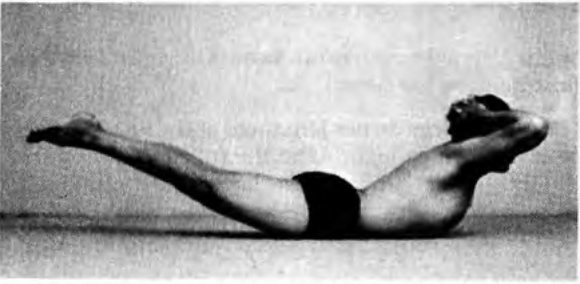
- From basic crocodile pose, inhale, raise your legs up and stretch it backward. At the same time, bring your arms backward and catch the back of your head with interlocked fingers.
Second variation:
- From basic crocodile pose, bend your arms from elbows that will support the whole head and torso. And then let your head hang down to the floor between over the palm of bend arms.
Third Variation:

- From Makarasana, folds you both hand try to grab the shoulder blades of the alternate sides like you are hugging yourself. By keeping the posture drop your head in between the gap of crossed arms.
Makarasana Benefits
- Makarasana relieves the condition of back pain [efn_note] Effect of Simplified Kundalini Yoga (Sky) Meditation and Exercise on Back Pain among the Women Patients http://aayvagam.journal.thamizhagam.net/issues/2013/May%202013/1%20Article%20May%202013.pdf [/efn_note] that may arise due to various issues like slip disc, spondylitis, muscular or vertebral injury. Moreover, it also helps in the development of upper and lower back extensor muscles [efn_note] Evolutionary Complexity and Complications, With Age-Related Changes inHuman Vertebral Column https://www.researchgate.net/ [/efn_note].
- Makarasana has a profound effect on the mental state. This asana brings calming and soothing influence on a practitioner by activating the Parasympathetic nervous system. In this way, it overcomes stress and anxiety [efn_note] Effect of Yoga On Anxiety Score And Resting Heart Rate In Young Healthy Individuals http://njirm.pbworks.com [/efn_note].
- Practicing Makarasana regulates the blood flow and allows the heart to pump in a controlled manner. According to one of the studies [efn_note] Effect of Yoga Therapy on Heart Rate, Blood Pressure and Cardiac Autonomic Function in Heart Failure https://www.ncbi.nlm.nih.gov/pmc/articles/PMC3939525/ [/efn_note], it reduces the blood pressure and load on the heart in Heart failure patients.
- It is one of the effective asanas for respiratory problems like asthma. According to one of the research [efn_note] Effect of Adjuvant Yoga Therapy on Pulmonary Function and Quality of Life Among Patients with Chronic ObstructivePulmonary Disease: A Randomized Control Trial https://www.researchgate.net [/efn_note], yogic practices including Makarasana have a significant improvement in lung function in COPD patients.
- The regular and appropriate practice of this asana makes the stiffness in lower and upper back disappears. It stretches the muscles of the lower back, pelvis, thighs, back of the torso, and in the neck region. Therefore, it increases muscular endurance and flexibility [efn_note] Effect of asanas on physical fitness of government residential school students http://www.theyogicjournal.com/pdf/2018/vol3issue1/PartF/3-1-43-292.pdf [/efn_note].
- Due to its tranquil effect on the mind and body along with stable postural structure, it can be considered for the practice of meditation and pranayama.
- According to an ayurvedic study [efn_note] To study the efficacy of Makarasana as an Agnivardhana Karma https://www.jaims.in/index.php/jaims/article/view/452/324 [/efn_note], practicing Makarasana puts pressure on the abdomen and lower back and simultaneously concentrate on breathing. The combination of these activities results in a positive effect on digestive functioning.
- The prone position this asana has another benefit regarding the abdomen. Many studies [efn_note] THE EXECUTIVES OF DIABETES MELLITUS THROUGH AASANA AND PRANAYAMA https://www.johnhopkinspress.com[/efn_note] have confirmed that yogic practice including makarasana rejuvenates the insulin-producing cells of pancreas of type 1 and 2 diabetes, which eases the diabetic signs.
